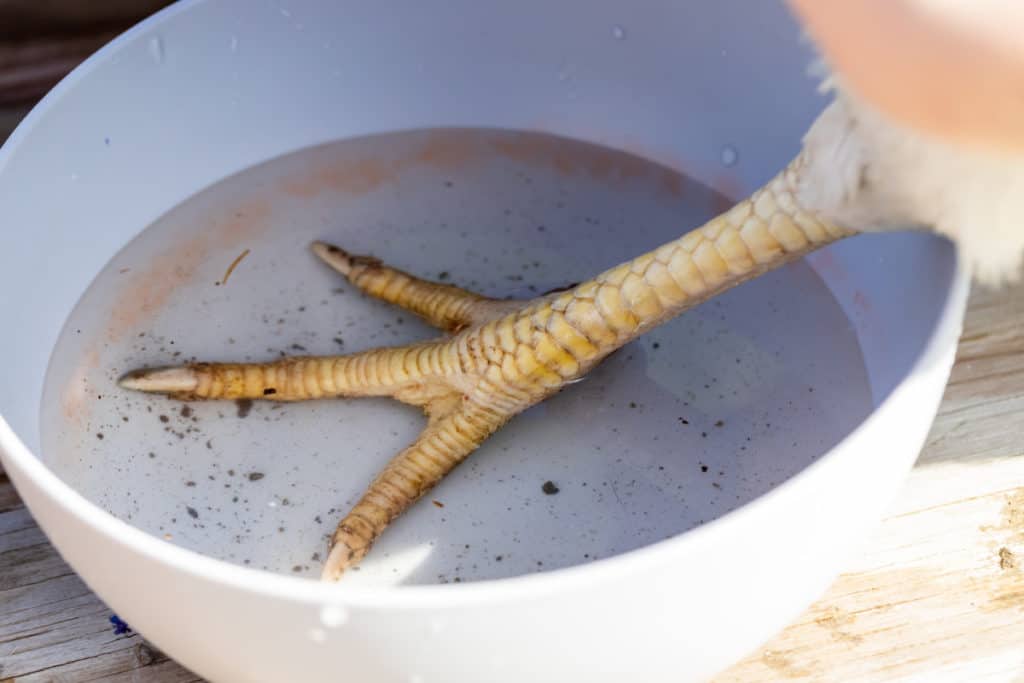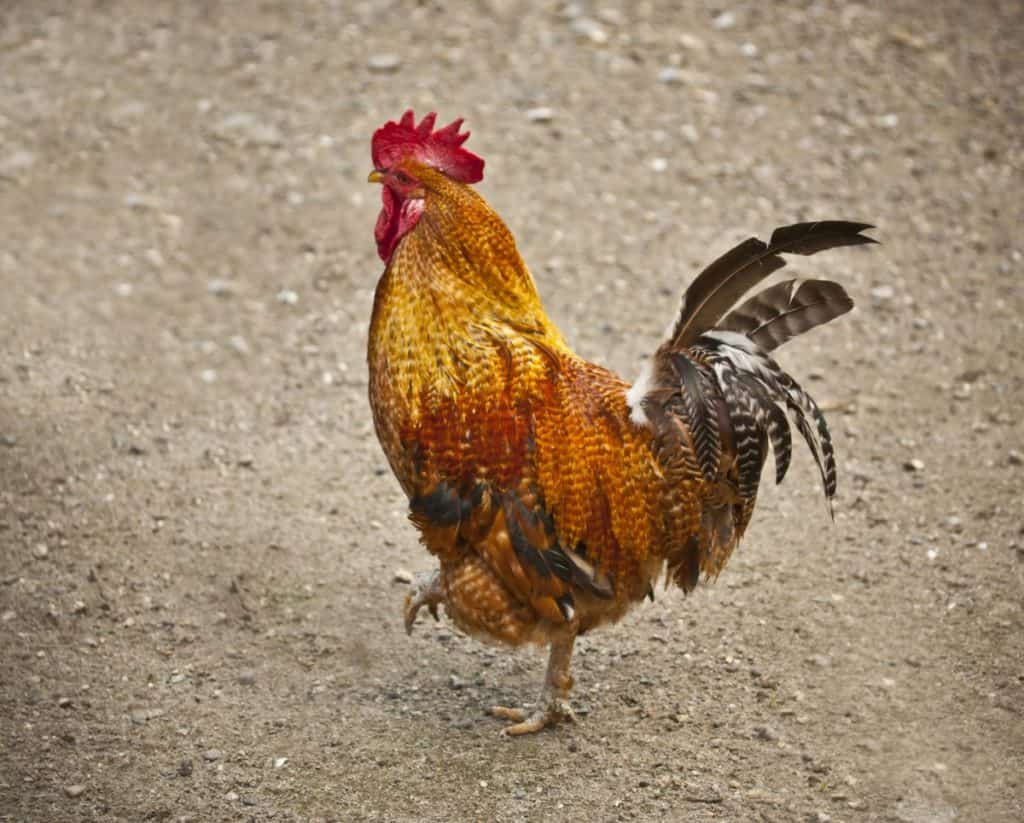Birds are delicate creatures, and chickens are no exception. When your chicken starts limping, you should always investigate. Unfortunately, determining the cause is sometimes tricky, and there are many reasons why a chicken may limp.
Chickens may limp because of a viral or bacterial infection. Wounds, injuries, ingrown toenail and broken limbs will affect a chicken’s mobility. Parasites and fungal infections can also cause sore, painful limbs. Nutrition must be examined when young chickens begin limping or show evidence of soft bones.
In this article, we will consider the underlying reasons that a chicken may start limping. We will also give ideas on treatment options and whether veterinary attention is needed.
Injuries Cause Limping In Chickens
It is essential to inspect any limping chicken for injuries on the legs or feet. The chicken may have injured itself on a foreign object or been injured by another chicken. Chickens sometimes fight or peck each other, and this can lead to open wounds. Wounds should be sanitized using a chicken-safe antiseptic such as povidone-iodine.
Rooster Spurs Cause Limping
Roosters grow longspurs, and sometimes the rooster can injure itself with its spurs. If this occurs, it is essential to clip or remove the spurs so that the rooster does not reinjure the wound or continually scrape the raw area. Sometimes the spurs are so long that the rooster cannot walk normally.
Ingrown toenail on foot of chicken
Recently my rooster had an ingrown toenail that was causing him to limp. The toenail was growing straight into the flesh causing his foot to bleed. Once I clipped it with a pair of scissors the limp was gone in a few days.
Broken Legs In Chickens
Chickens can break their legs in various ways. If you suspect the leg is broken, contact a veterinarian. If it is after hours or you do not live near a veterinarian, splint the leg using an adjusted tongue depressor or small stick such as a popsicle stick.
Wrap the leg in a soft covering before splinting with the stick to prevent the stick from causing pressure sores on the leg. Wrap a soft bandage over the stick, and cover this with vet wrap or sticky bandage to keep everything in place.
Consult a veterinarian when possible, as the bones may need to be realigned if they are displaced. Keep the chicken in a small quiet area or cage.
Bacterial Infections Cause Limping In Chickens.
Bacterial infections are a prevalent cause of a chicken that suddenly starts limping. Chickens scratch in the dirt with their feet and can cause wounds. Even a small opening is enough to allow bacteria to penetrate the skin, and infection will develop.

Bumblefoot In Chickens
Most chicken keepers will encounter Bumblefoot at some stage. It is caused by Staphylococcus bacteria. Staphylococcus is a common bacteria, and it is almost impossible to keep it from being present in a chicken coop.
Bumblefoot presents as a thickening or swelling in the foot or leg. The foot may show a blackened circular area which is necrotic tissue caused by the bacteria. Treatment for bumblefoot usually involves soaking the foot and removal of the necrotic pus plug.
Topical antibiotics are administered, and the foot is bandaged with dressing changes every two to three days.
If your chicken has a staphylococcus infection, you may need to get an oral or injectable antibiotic from the vet. Staphylococcus can become a generalized infection that affects the whole bird and not just the leg. If your bird is weak, listless, or has diarrhea, consult a veterinarian.
Other bacteria can enter any foot injury and cause an infection. Generally, these infections and bumblefoot can be managed at home. Some chicken owners who are squeamish or do not feel confident may prefer to consult a veterinarian.
Mycoplasma Synoviae Causes Lameness.
Mycoplasma synoviae is a bacterium that infects chickens. They have respiratory symptoms and swollen, hot legs and feet. They will be very definitely lame. The chicken’s comb and wattles may become pale or bluish. Some chickens will be infected and are asymptomatic.
Consult a veterinarian as the whole flock may need to be treated, and the vet will prescribe antibiotics.
Viral Causes Of Lameness
Viral infections are difficult to control once they infect a flock. It is advisable to consult a veterinarian if you suspect your chickens have a virus.

Marek’s Disease And Chicken Limping.
A herpes virus causes Marek’s Disease (fowl paralysis). It affects the nerves and can cause internal tumors. Chickens between eight and twenty weeks are most commonly affected. Some chickens can show symptoms at three or four weeks or as late as eight months, but these are unusual.
The typical presentation is that the bird shows initial lameness or paralysis in one of its legs. This is due to damage to the sciatic nerve. The paralysis will progress until the chicken is unable to stand. Other nerves also become affected, and the chicken dies. This presentation of symptoms is the nervous form of the disease.
A veterinarian must be consulted to manage this disease.
Viral Arthritis As A Cause of Chicken Lameness
Viral arthritis in chickens is caused by reoviruses that inflame the joints and tendons of the leg and foot, causing them to swell. The tendons may erode to such an extent that they rupture.
Cartilage in the joints of the legs and feet can be permanently damaged. The chicken presents with lameness, poor mobility, and the growth rate may be retarded. It usually affects heavier chicken breeds more severely due to the weight they carry.
Consultation with a veterinarian is essential to manage the disease and institute a vaccination program. There is no treatment for birds that are already showing symptoms.

Nutritional Causes Of Lameness In Chickens.
Rickets is a bone condition caused by a lack of calcium in the diet. The bones are soft and bend easily, causing the chicken to be lame. Rickets is usually seen in young, growing chickens.
The addition of dietary calcium corrects it. Lack of calcium in adult chickens can cause a condition known as layer fatigue. The chickens lose calcium when laying eggs. They become paralyzed by the fragile, calcium-deficient bones in their feet and legs.
They are unable to move, and the birds die from dehydration. Layer fatigue is seen most commonly in young laying hens housed in batteries.
Do Parasites Make My Chickens Limp?
Red mites and scaly leg mites (cnemidoccoptes) can cause lameness due to pain in the legs and generalized weakness from anemia. The use of anti-parasitic medications to treat the chickens and their bedding will eradicate the mites.
Can Fungal Infection Cause Limping In Chickens?
Fungal infections are caused by wet, dirty bedding or pens. Fungi thrive in moist warm conditions and can cause lameness in chickens. Treatment involves anti-fungal medications. The bedding and living conditions must be dried and treated to eradicate the fungal spores.
Conclusion
There are many varied causes of limping in chickens. Diagnosis requires careful observation and attention to the specific bird, the entire flock, and the living conditions. Some conditions are seen in only one bird, but others may affect the whole flock.
If you are unsure of the cause of the lameness, consult a veterinarian. In some instances, the lameness may be treated at home, but others will require veterinary intervention.
Reference.
MSD Manual. 2020. Viral Arthritis In Poultry. https://www.msdvetmanual.com/poultry/viral-arthritis/viral-arthritis-in-poultry

